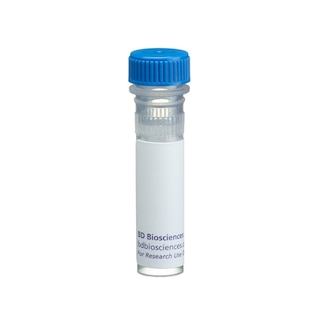-
Reagents
- Flow Cytometry Reagents
-
Western Blotting and Molecular Reagents
- Immunoassay Reagents
-
Single-Cell Multiomics Reagents
- BD® OMICS-Guard Sample Preservation Buffer
- BD® AbSeq Assay
- BD® OMICS-One Immune Profiler Protein Panel
- BD® Single-Cell Multiplexing Kit
- BD Rhapsody™ ATAC-Seq Assays
- BD Rhapsody™ Whole Transcriptome Analysis (WTA) Amplification Kit
- BD Rhapsody™ TCR/BCR Next Multiomic Assays
- BD Rhapsody™ Targeted mRNA Kits
- BD Rhapsody™ Accessory Kits
-
Functional Assays
-
Microscopy and Imaging Reagents
-
Cell Preparation and Separation Reagents
-
- BD® OMICS-Guard Sample Preservation Buffer
- BD® AbSeq Assay
- BD® OMICS-One Immune Profiler Protein Panel
- BD® Single-Cell Multiplexing Kit
- BD Rhapsody™ ATAC-Seq Assays
- BD Rhapsody™ Whole Transcriptome Analysis (WTA) Amplification Kit
- BD Rhapsody™ TCR/BCR Next Multiomic Assays
- BD Rhapsody™ Targeted mRNA Kits
- BD Rhapsody™ Accessory Kits
- United States (English)
-
Change country/language
Old Browser
This page has been recently translated and is available in French now.
Looks like you're visiting us from {countryName}.
Would you like to stay on the current country site or be switched to your country?


Regulatory Status Legend
Any use of products other than the permitted use without the express written authorization of Becton, Dickinson and Company is strictly prohibited.
Preparation And Storage
Recommended Assay Procedures
Applications include immunoprecipitation, western blot analysis (1-2 µg/ml) and electropheretic mobility shift assays (EMSA). Please refer to reference Bain G, et al, 1993 for suggested methods.
Product Notices
- Since applications vary, each investigator should titrate the reagent to obtain optimal results.
- Please refer to www.bdbiosciences.com/us/s/resources for technical protocols.
- Caution: Sodium azide yields highly toxic hydrazoic acid under acidic conditions. Dilute azide compounds in running water before discarding to avoid accumulation of potentially explosive deposits in plumbing.
B lymphoid cells go through many intermediate steps before becoming plasma cells which produce and secrete immunoglobulins (Ig). The earliest stage of B-cell differentiation is represented by pro-B lymphocytes that contain both the Ig heavy- and light-chain genes in the transcriptionally inactive germ line configuration. As pro-B lymphocytes differentiate into pre-B cells, Ig heavy-chain genes rearrange and are transcribed and translated. However, the Ig light-chain genes are not transcribed before the pre-B cells differentiate into mature Blymphocytes. The developmental regulation of the Ig gene expression is dependent on various sequences in the Ig enhancer region. One class of such regulatory sequence elements comprises the E-boxes which share the NNCANNTGNN consensus sequence. The E2 boxes are particularly interesting because they are present in muscle and pancreas-specific enhancers. A family of proteins binds to the E2 box. These proteins share a common amino acid sequence motif that is proposed to form two amphipathic helices interrupted by a loop, designated the helix-loop-helix (HLH) motif. The HLH motif mediates homo- as well as heterodimerization with other HLH proteins. Most HLH proteins possess a basic region located at the N terminal of the HLH region which is responsible for DNA binding. Two E2 box binding proteins have been described (E12 and E47) that arise as alternatively spliced form of the E2A gene. E12 and E47 are identical except in the HLH region. These two proteins have been directly implicated in the regulation of B-cell, muscle and pancreas-specific gene expression. Futhermore, studies have shown that relative levels of E47 are important for regulating the lineage of T cells in the thymus. For example, mice deficient in E47 demonstrate a change in the ratio of CD4/CD8 cells as well as a greater percentage of cells that stain for the mature CD4 marker, implicating E47 in selection of T cells.
Clone G127-32 recognizes human E47. It cross-reacts with mouse E47. G127-32 does not recognize E12, the alternately spliced product of the E2A gene or E2-2, a closely reltated protein. Recombinant E47 was used as immunogen.
Development References (7)
-
Bain G, Gruenwald S, Murre C. E2A and E2-2 are subunits of B-cell-specific E2-box DNA-binding proteins.. Mol Cell Biol. 1993; 13(6):3522-3529. (Biology). View Reference
-
Bain G, Robanus Maandag EC, te Riele HP. Both E12 and E47 allow commitment to the B cell lineage. Mol Cell Biol. 1993; 6(2):145-154. (Clone-specific: Immunoprecipitation, Western blot). View Reference
-
Buskin JN, Hauschka SD. Identification of a myocyte nuclear factor that binds to the muscle-specific enhancer of the mouse muscle creatine kinase gene. Mol Cell Biol. 1989; 9(6):2627-2640. (Biology). View Reference
-
Lenardo M, Pierce JW, Baltimore D. Protein-binding sites in Ig gene enhancers determine transcriptional activity and inducibility. Science. 1987; 236(4808):1573-1577. (Biology). View Reference
-
Murre C, McCaw PS, Baltimore D. A new DNA binding and dimerization motif in immunoglobulin enhancer binding, daughterless, MyoD, and myc proteins. Cell. 1989; 56(5):777-783. (Biology). View Reference
-
Sun XH, Baltimore D. An inhibitory domain of E12 transcription factor prevents DNA binding in E12 homodimers but not in E12 heterodimers. Cell. 1991; 64(2):459-470. (Biology). View Reference
-
Whelan J, Cordle SR, Henderson E, Weil PA, Stein R. Identification of a pancreatic beta-cell insulin gene transcription factor that binds to and appears to activate cell-type-specific expression: its possible relationship to other cellular factors that bind to a common insulin gene sequence. Mol Cell Biol. 1990; 10(40):1564-1572. (Biology). View Reference
Please refer to Support Documents for Quality Certificates
Global - Refer to manufacturer's instructions for use and related User Manuals and Technical data sheets before using this products as described
Comparisons, where applicable, are made against older BD Technology, manual methods or are general performance claims. Comparisons are not made against non-BD technologies, unless otherwise noted.
For Research Use Only. Not for use in diagnostic or therapeutic procedures.
